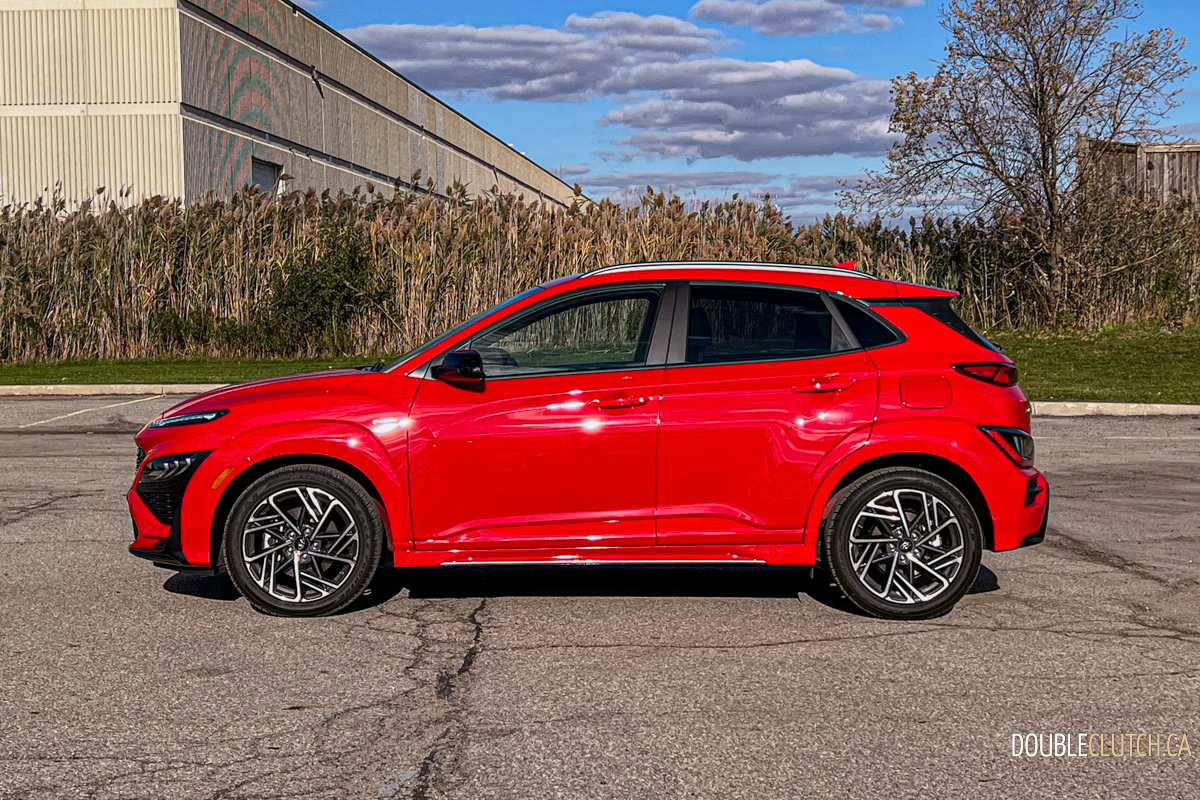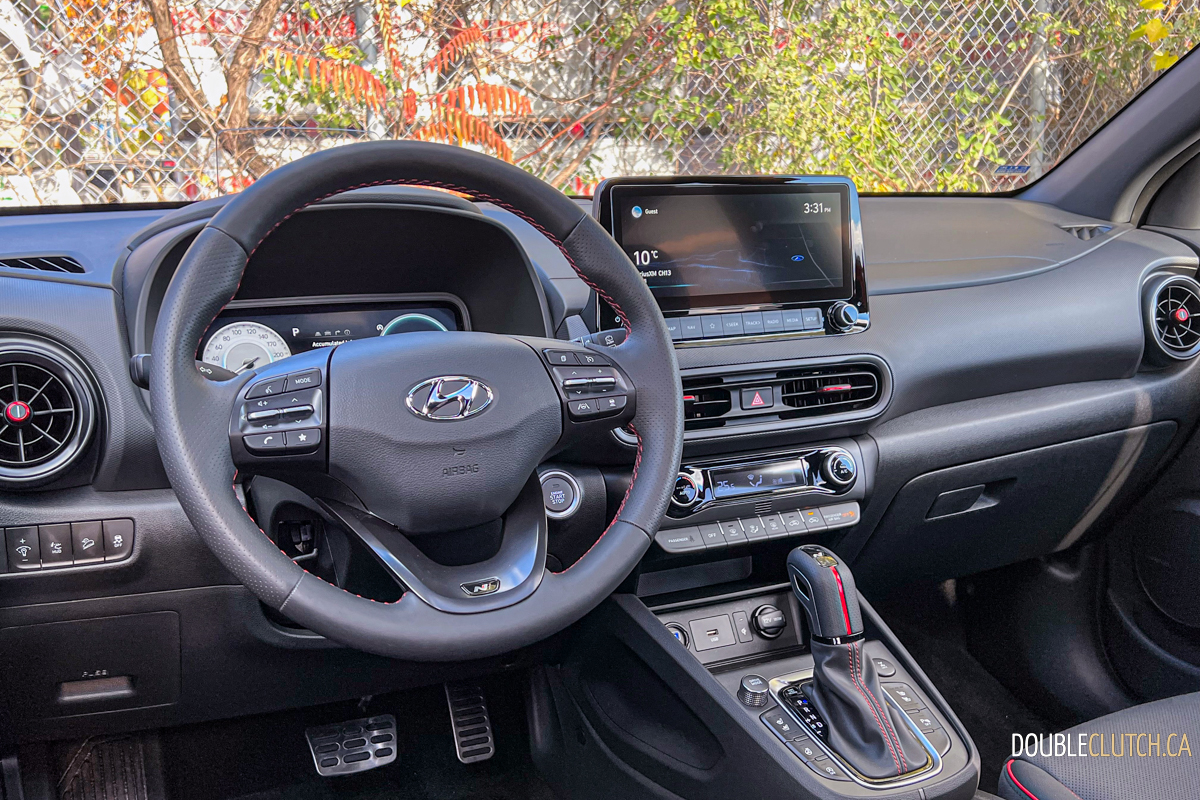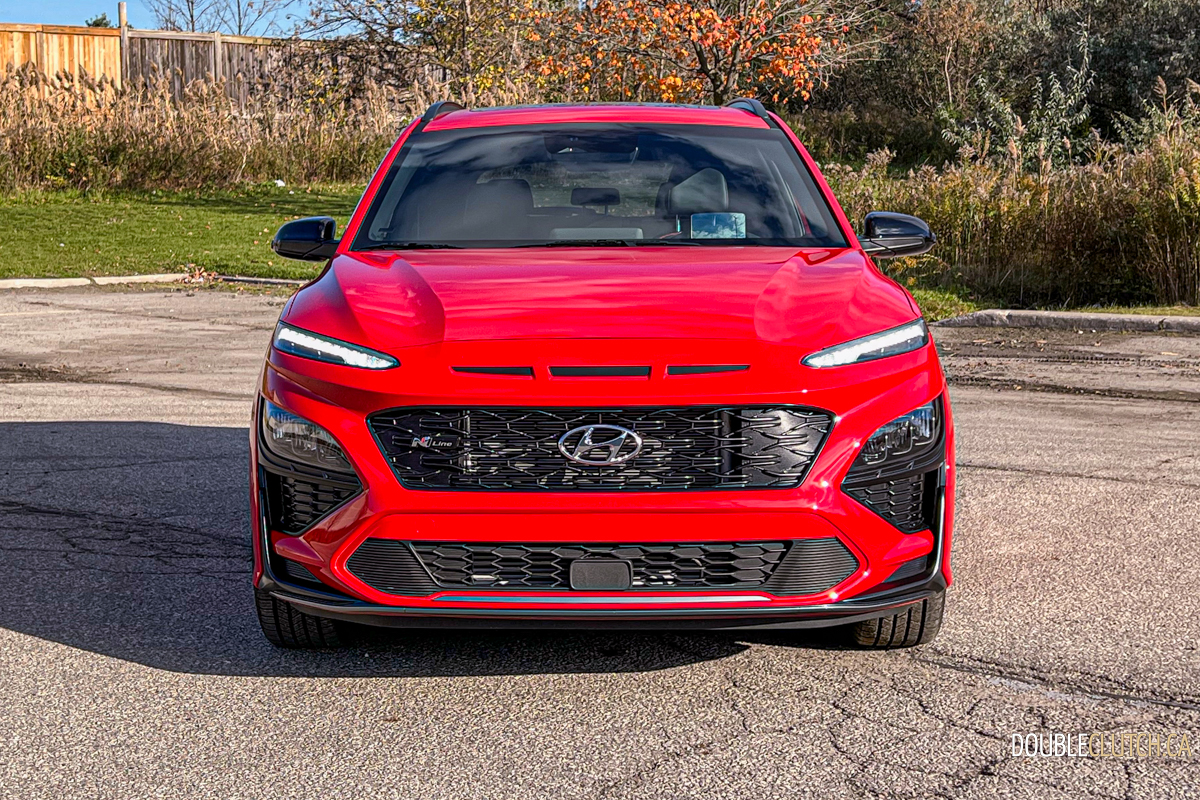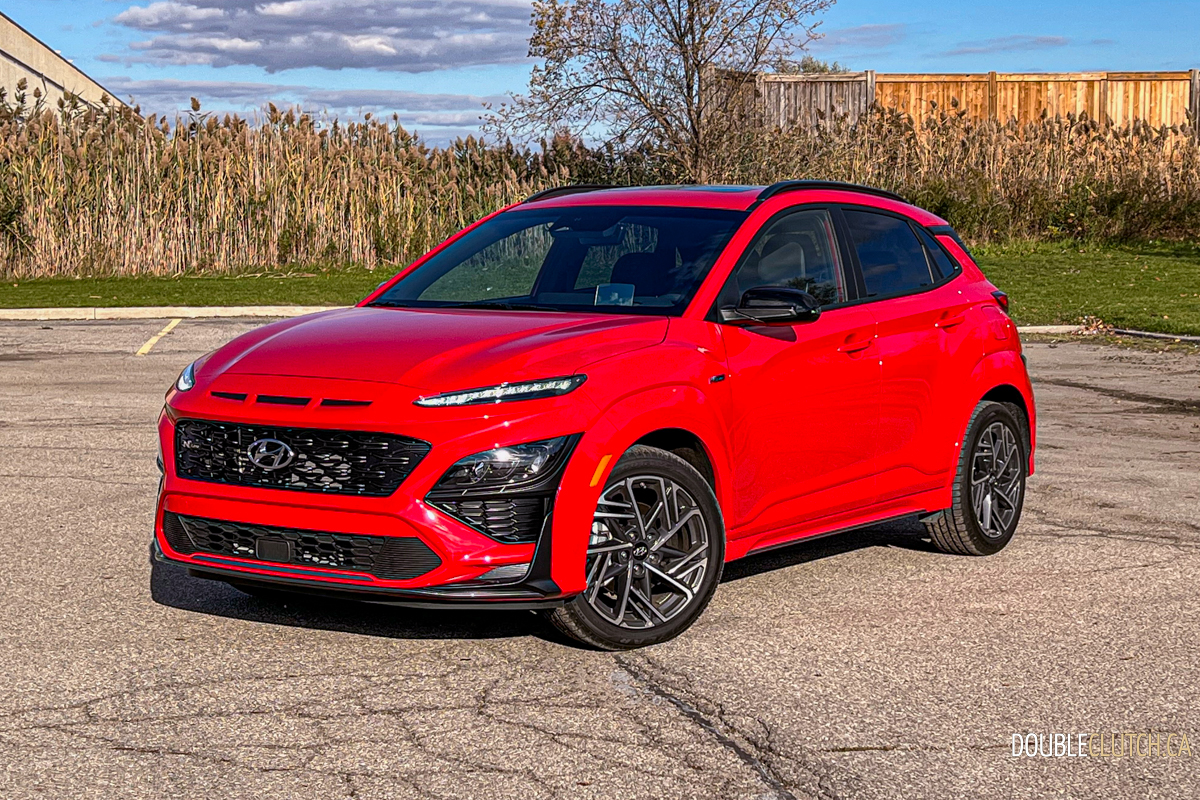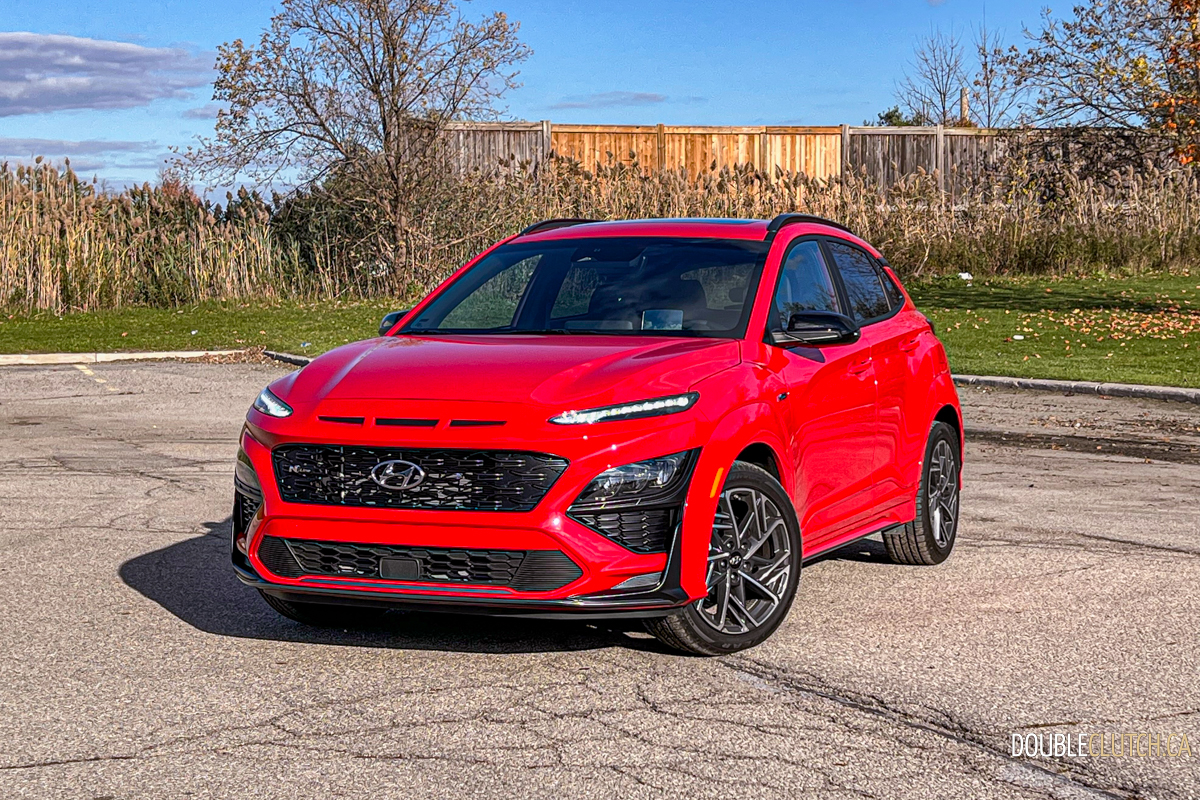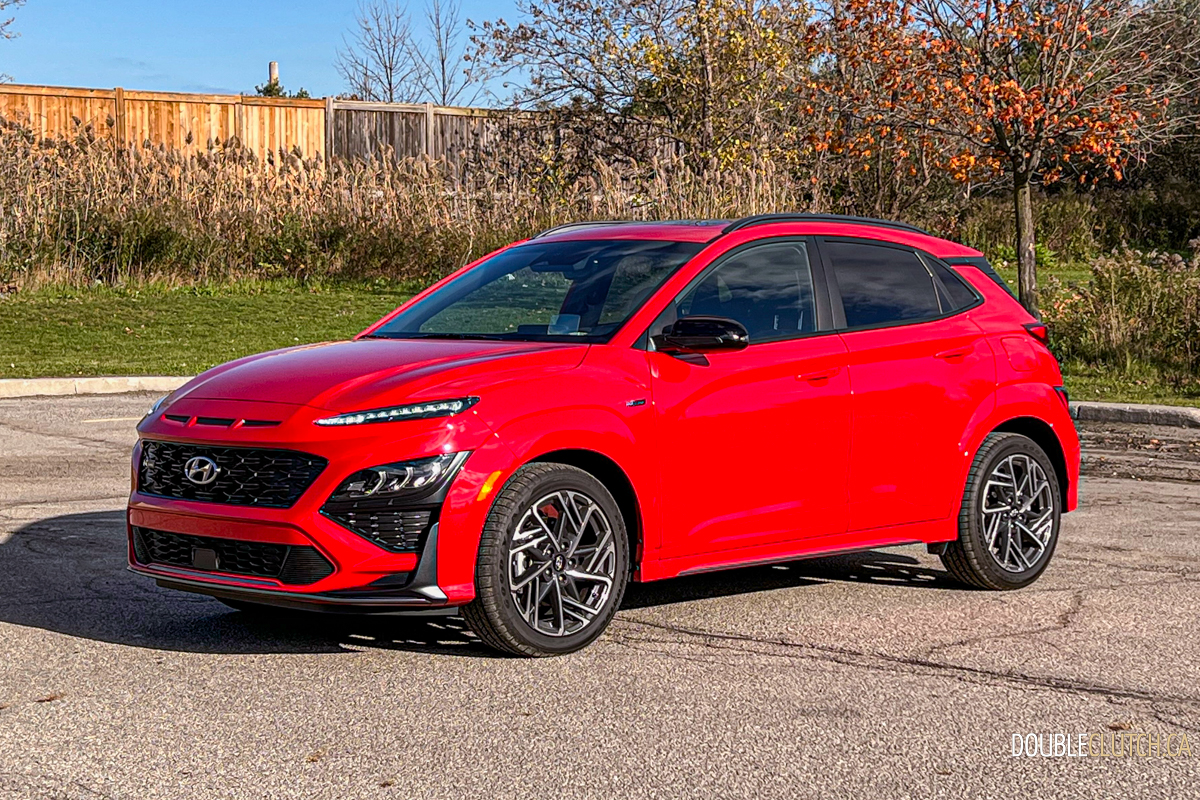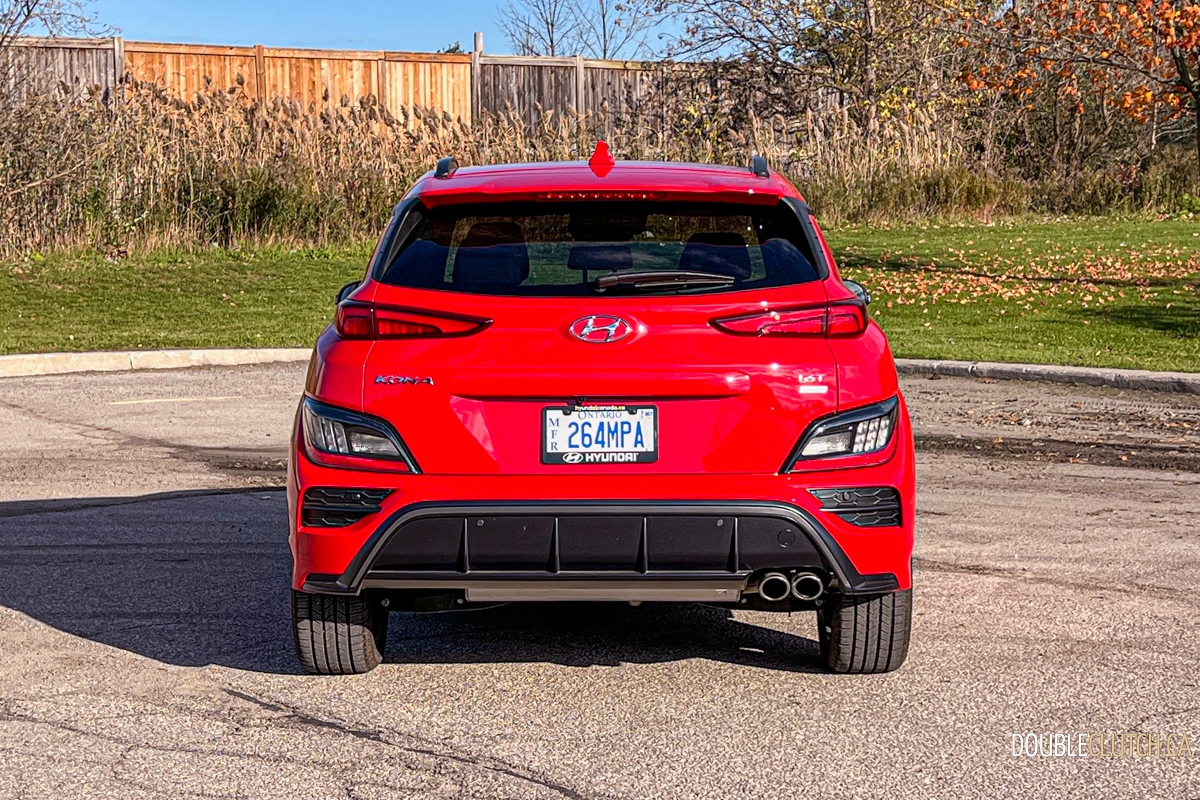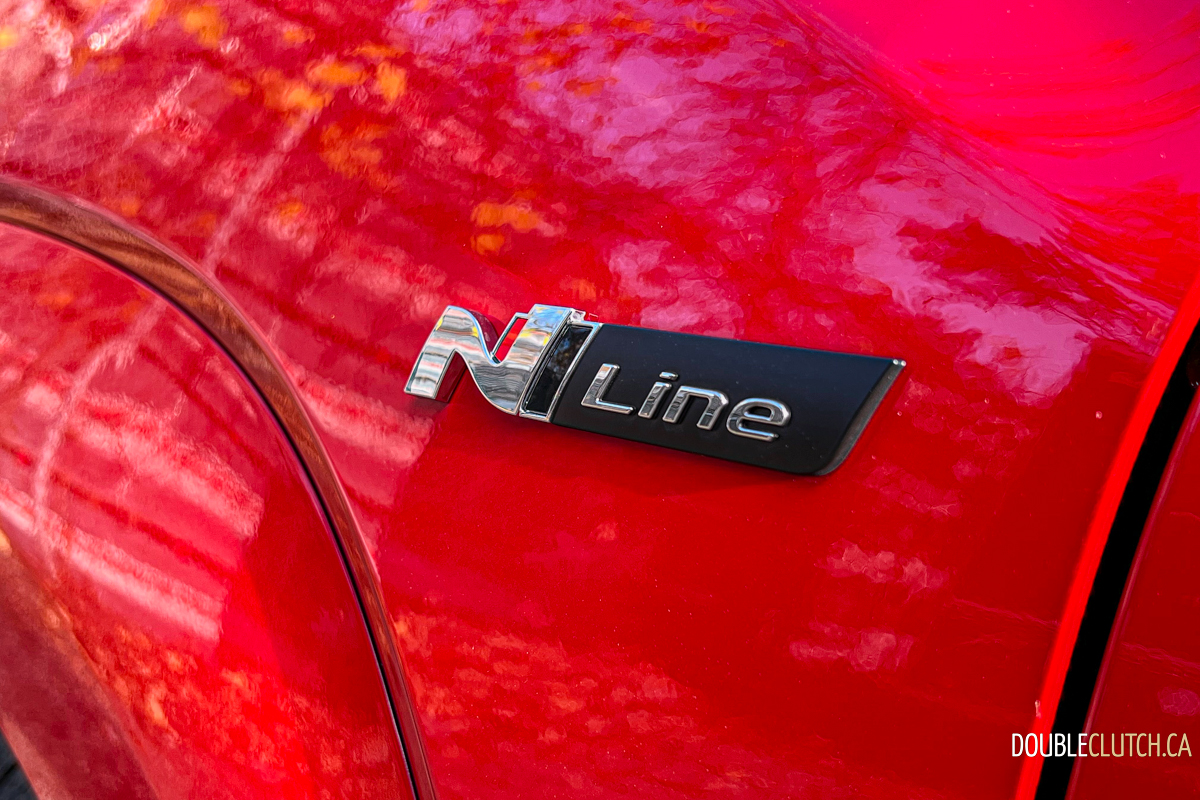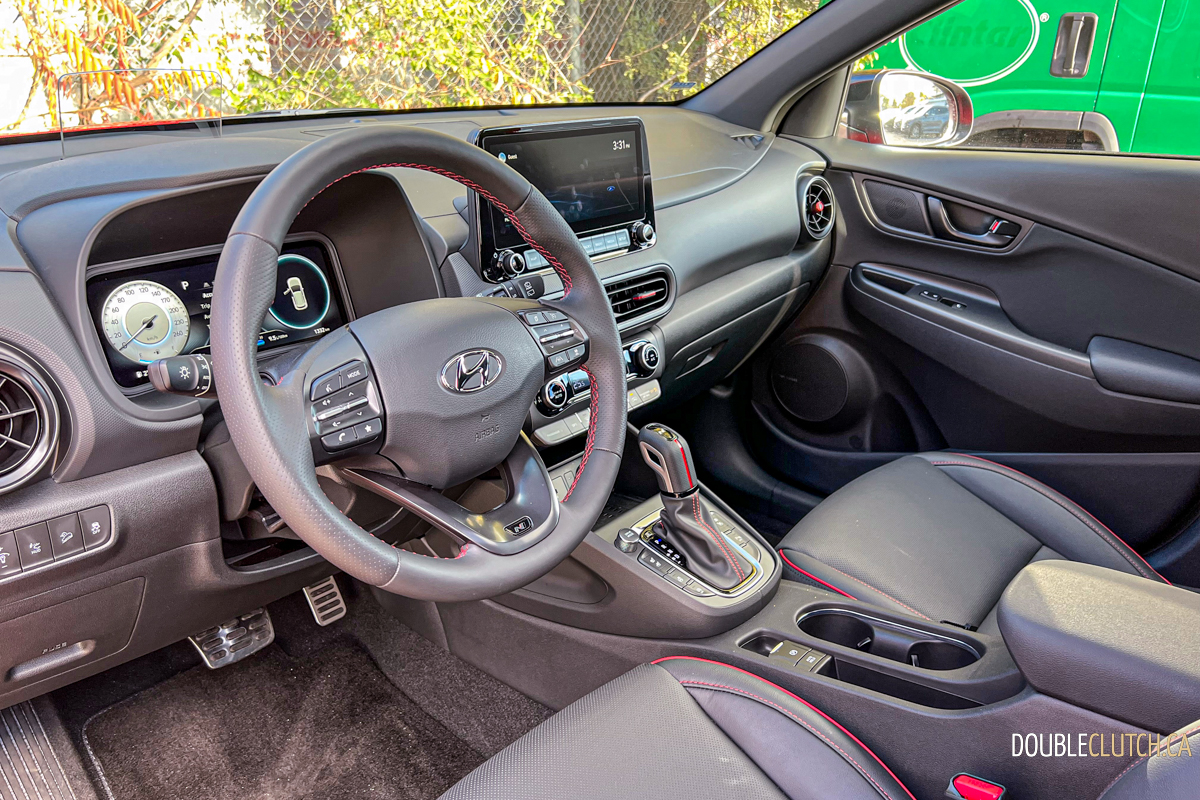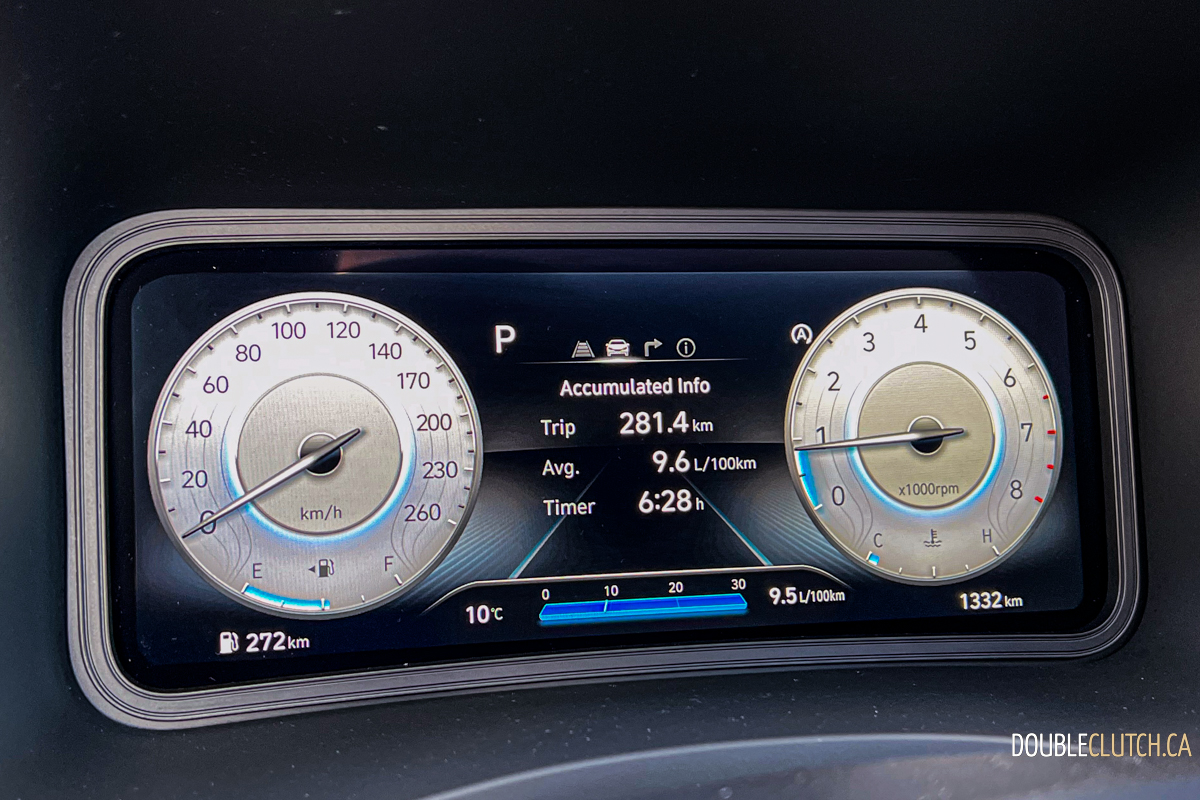The Kona took the market by storm and was well received as a complete package by both consumers and journalists alike. Not one to rest on their laurels, Hyundai gave the Kona a mid-cycle refresh, and today we have the 2022 Hyundai Kona N-Line to find out if it retains the magic from the original model.
While the newly refreshed 2022 Kona isn’t an all-new model or a full redesign, it offers a fresh look while retaining the same chassis, rough dimensions inside and out, and the cheeky personality it’s known for. Some worthwhile improvements inside and out have made this a significantly better package overall. It’s worth mentioning that the N-Line is not the full Kona N, but an appearance package aiming to give the Kona a bit more style.
Looking at the exterior, the N-Line model we have here has done away with the plastic body cladding that had been found around the wheel wells. This is marked improvement and makes the Kona look more sophisticated with a cleaner design. A new front bumper and grill are a change from the original, and the rear bumper has been massaged to match the front. Unfortunately, fog lights are no longer offered.
Jump inside and the cabin layout is similar to the previous model, which isn’t a bad thing. Everything is ergonomically well-placed and within reach. Choose the Ultimate Package for a massive list of upgrades and add ons.The biggest changes are the larger infotainment screen and digital gauge cluster, each coming in at 10.25 inches. Both look massive in the Kona while providing bright and vibrant graphics.
Ventilated seats are also new, a feature that is quite rare in the segment. A Harman-Kardon premium sound system with eight speakers has replaced the tinny-sounding Infinity unit and is another significant improvement in both quality and clarity. The manual, mechanical parking brake is now gone and has been replaced with an electronic unit for a cleaner look.
Unfortunately, the hard plastics found throughout the interior are still present. This is a missed opportunity, but thankfully everything is tightly put together with minimal panel gaps. Quality leather is used on the shift lever, steering wheel and seating surfaces. The N logo can be found here as well denoting this model as a touch more special.
The two available powertrains are carryovers from the previous year, a base 2.0-liter four-cylinder and a 1.6-liter turbocharged four. The latter has received a horsepower bump of 15, to 195 at 6,500RPM. Torque remains at 195-lb-ft., between 1,600 and 4,000RPM. The 1.6-liter Kona remains one of the peppier engines in the segment and would be the “go to” choice of the two available. Matched to Hyundai’s seven-speed dual-clutch transmission, this subcompact crossover scoots to 100km/h in 6.5 seconds.
While this is not the eight-speed wet clutch gearbox found in the Veloster N, it feels much improved over the previous unit. While shifts remain quick, there is a level of smoothness that was previously missing, especially in colder weather. In addition, the jerkiness found at lower speeds is much less evident. With this being the N-Line, it would have been nice to see a set of shift paddles behind the steering wheel.
Not much has changed with the ride and handling and that’s a good thing, because the Kona handles better than most in the segment and remains quite composed when hit with rough surfaces; tossable and well controlled. The steering is light yet provides a decent amount of feedback to the driver’s fingertips, another feature that’s sorely missed in many modern vehicles.
Those that prioritize fuel economy should consider the base naturally-aspirated engine, which is also available with front-wheel-drive for additional fuel savings. With the engine still in its break-in period, we averaged approximately 9.0L/100km. Hyundai has this model rated at 8.8L/100km city and 7.4L/100km highway for a combined 8.2L/100km. As expected, regular 87-octane fuel is all that’s needed, and much welcomed with current fuel prices.
Getting into a 2022 Kona will start at $21,999 for the base Essential front-drive model. Jump into the N-Line AWD with the 1.6-liter turbo-four for $28,099. Those wanting features like the larger infotainment screen, digital gauge cluster, cooled seats, sunroof, leather seats and a bunch of driver assist functions will need to select the Ultimate Package for $5,600. This brings the total to $33,699, and may sound like a costly upgrade but in truth, this pricing isn’t far off from the fully loaded Kona released 3 years ago.
Thankfully, the Hyundai Kona’s fun to drive nature and value has been retained with this latest refresh. Loaded with the most important tech and safety features, the Kona remains a smart choice. There really is a version for everyone, from the affordable mainstream models to the electric Kona EV, and also the full-blown Kona N that has just hit production. As the top selling subcompact crossover in Canada, the 2022 Hyundai Kona N-Line looks to continue this trend.

